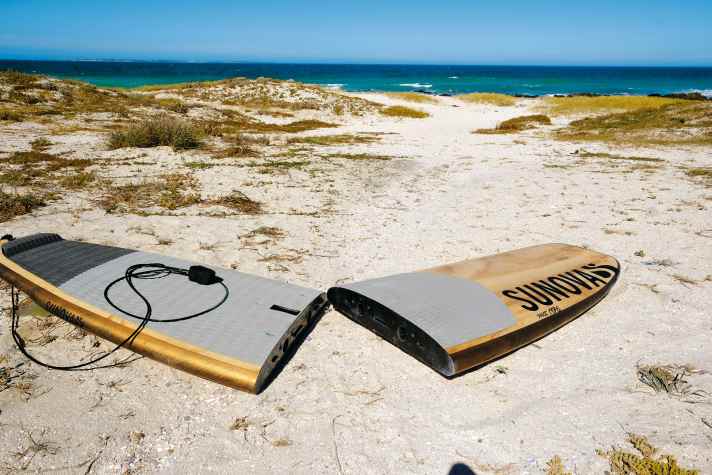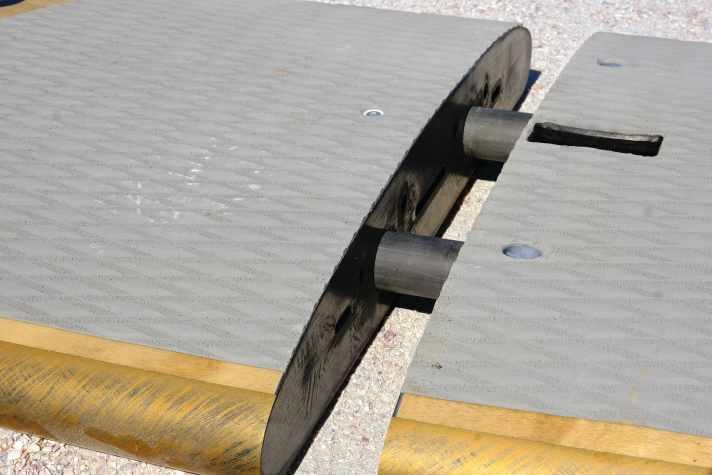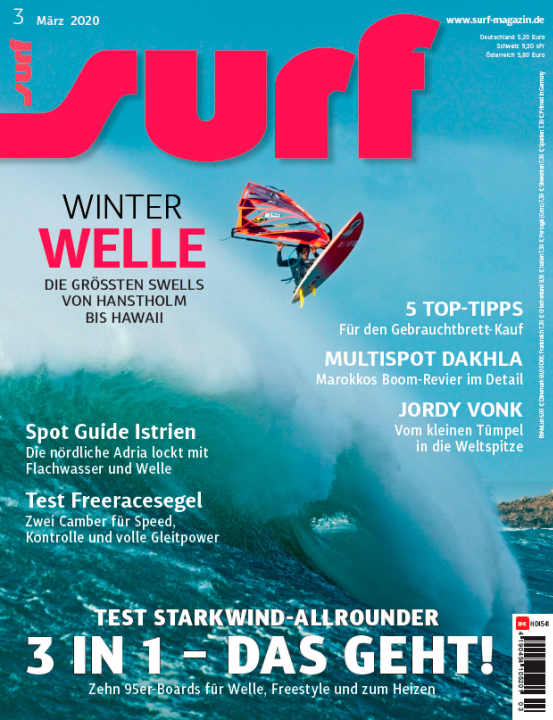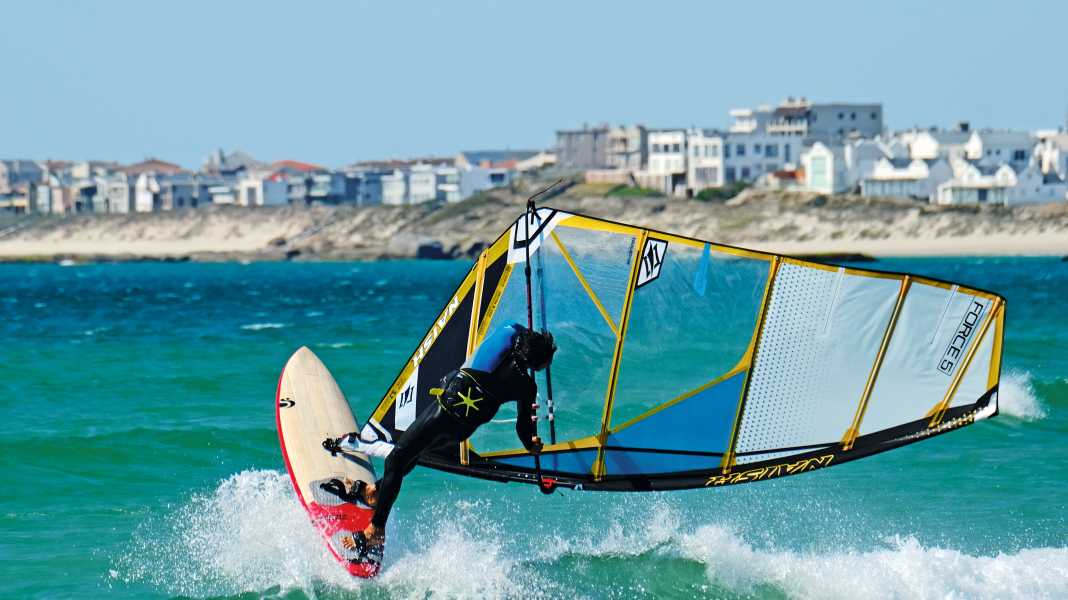
"It's completely flat - from front to back" - a surf tester can hardly believe it, pushing the aluminium ruler back and forth again and again. The team gathers around the 85-litre freemove board from Sunova - a 226-centimetre-long eco-alien with a classy natural wood look - as if it had just landed in the test camp. With a classically stretched outline, thin, round rails right into the tail and a gentle but completely continuous rocker line without a straight gliding surface underfoot. Jonah Lepak, the shaper from Santa Cruz, has an explanation for this: "The longer outline is intended to give a classic feel and ensure a smooth ride. On the one hand, the flat underwater hull is neutral and gives the board more flex for maximum cushioned planing. The moderate but continuous rocker favours early planing and - in combination with the flat underwater hull - soft carving in the turn."
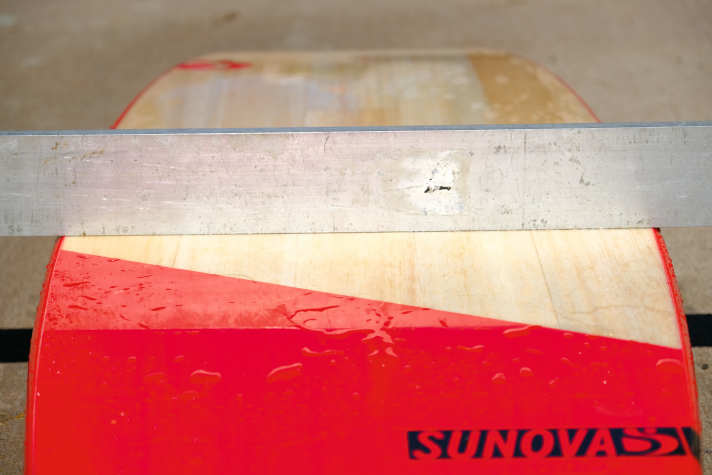
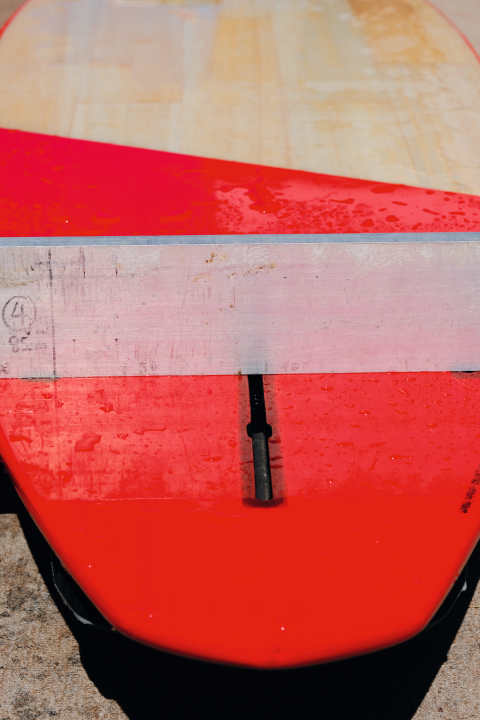
However, when inspecting the board on land, it is noticeable that the base coat covering the entire board, including the footpads, is not at all "smooth". However, experience has shown that the rough varnish disappears from the pads after a short time. The feet find a particularly secure hold in the firm but comfortable straps. However, this is not absolutely necessary on the board. This is because the board was particularly impressive in the surf test in terms of smoothness and controllability.
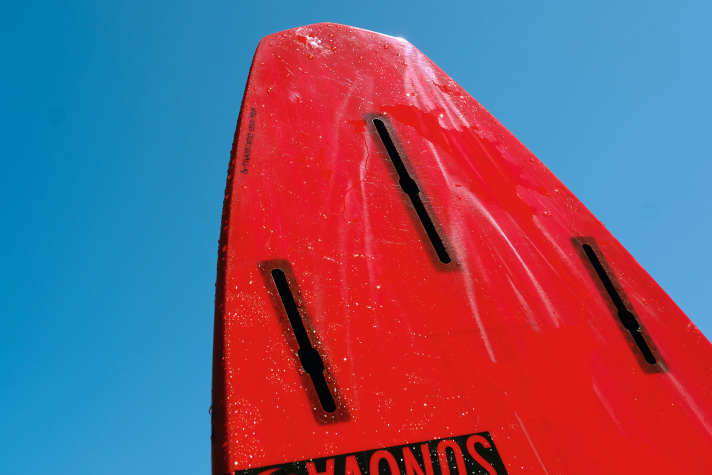
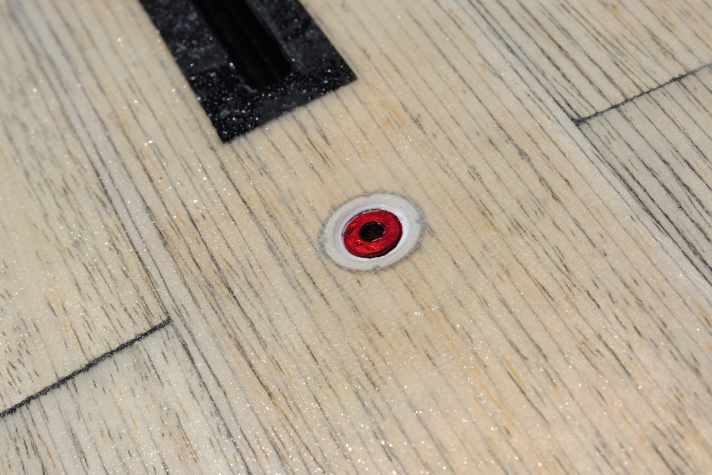
Pleasant glide
Unfortunately, we didn't have an original fin set at our disposal during the test in Langebaan (photo at the top), so we had to improvise and tested the board once with a fairly small 24 mm single fin and also with a thruster set - albeit with side fins that were one size too big. In every set-up, however, the board surprised us with a very smooth transition into the planing phase and, above all, very fast acceleration. Even on the thin 24 mm fin, the board flies cleanly over choppy water with controlled foot pressure. Lively and light-footed underfoot, it reacts quickly and encourages wagging and carving. Tight jibes? No problem for the small whisk and even in wide radii it offers safety and glide potential for a quick dance on the wood parquet while the board glides cleanly through the turn. Even without a "V" in the underwater hull, the board edges light-footedly and with little pressure. It is just as easy to lever it into the air from full planing speed, and the continuous rocker may even help to release the board from the water surface with less effort.
For freemove and freestyle
This provides the best conditions for power moves such as a ponch or even a flaka, but the tail is quite narrow and not stable enough for sliding manoeuvres. As usual, the wave outline somewhat reduces the freestyle potential here. On the other hand, the board is a lot of fun when bolting through choppy water, the bow runs freely and the board feels neither too soft nor too hard underfoot. It retains its good smoothness right into the power jibe, even in choppy waves it glides well through the turn, the nose doesn't grab, the speed is well maintained. When riding small waves, we missed some turning potential in the cutback - but this can also be attributed to the large side fins.
SURF-FAZIT
A successful freemove board, a classic for bump & jump. Not the most radical board in the surf, but with plenty of freestyle potential and well suited as a strong wind all-rounder for inland and coastal areas. Available to order only.
Sunova Freestyle-Wave 85
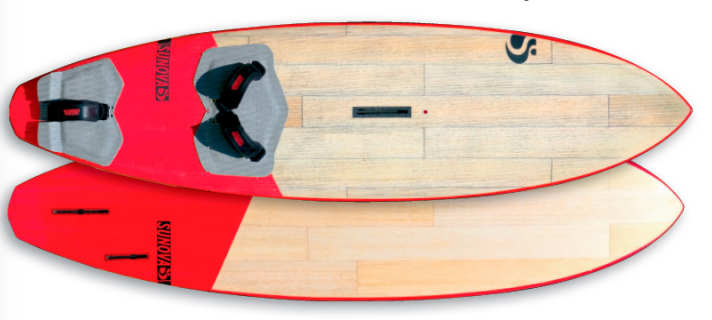
- Length 226 cm
- Paps 60 cm
- Volume 85 litres
- Weight 6.3 kilos (SURF measurement)
- Price 2050 Euro
- Info www.sunovasurfboards.com
- Contact us www.surfriderstore.de
Interview with Martin Jandke, Sunova
How long has Sunova been around?
Bert Burger, Shaper of the Year 2007 and co-founder of Firewire Surfboards, founded the brand around 30 years ago. Bert weighs 100 kilos and his surfboards had never lasted longer than three months. That's why he developed his own balsa sandwich with parabolic rails made from balsa wood.
How long has Sunova Windsurfboards been around?
Six years after Bert left Firewire, we realised that the technology was too good not to use it in other water sports. It worked particularly well for SUP raceboards. But with its flexing underwater hull, we thought it was even better for kite and windsurf boards. We tested shapes designed by Jonah Lepak. He was previously a team rider at Quatro. We built a waveboard and everyone who tried it loved it. That was three years ago and since then we've had a complete windsurfing range - from waveboards to freeride and 4-in-1 foilboards.
You are one of the few brands to have your own factory. What is the background?
Bert Burger, Klaus C. Müller and I are the three partners of the "Board Factory". Klaus and I worked for many years at Cobra, where most of the boards are produced. The "Board Factory" is a factory with 2500 square metres, 80 kilometres north of Phuket in Thailand, directly on the beach.
Do you also produce boards for other brands?
No. But we occasionally work together with friends; we once did a limited edition together with Roberto Ricci.
Are there any special features of your construction method compared to conventional productions?
The wood is special. In addition to the incredibly cool look, it has all its stability in the longitudinal direction, unlike PVC foam, which has no orientation. But in all boards you need strength and flex, especially lengthways. On top of that, the balsa makes for a particularly soft and comfortable board bottom.
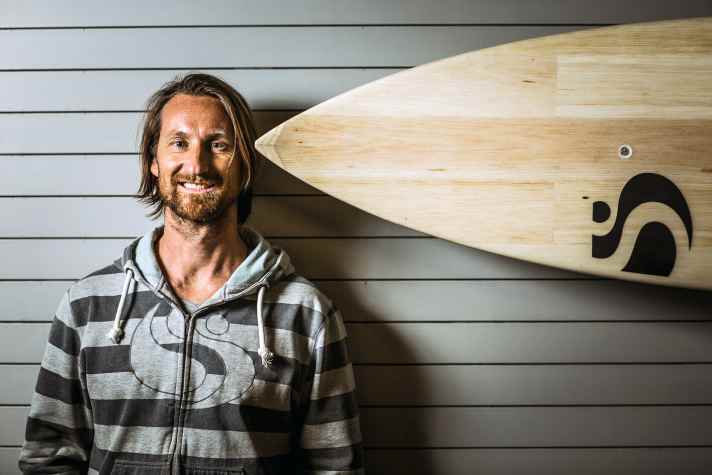
Sunova SUP board
"In principle, all boards - including kite and windsurf boards - are available in two parts," says Martin Jandke, Sunova
